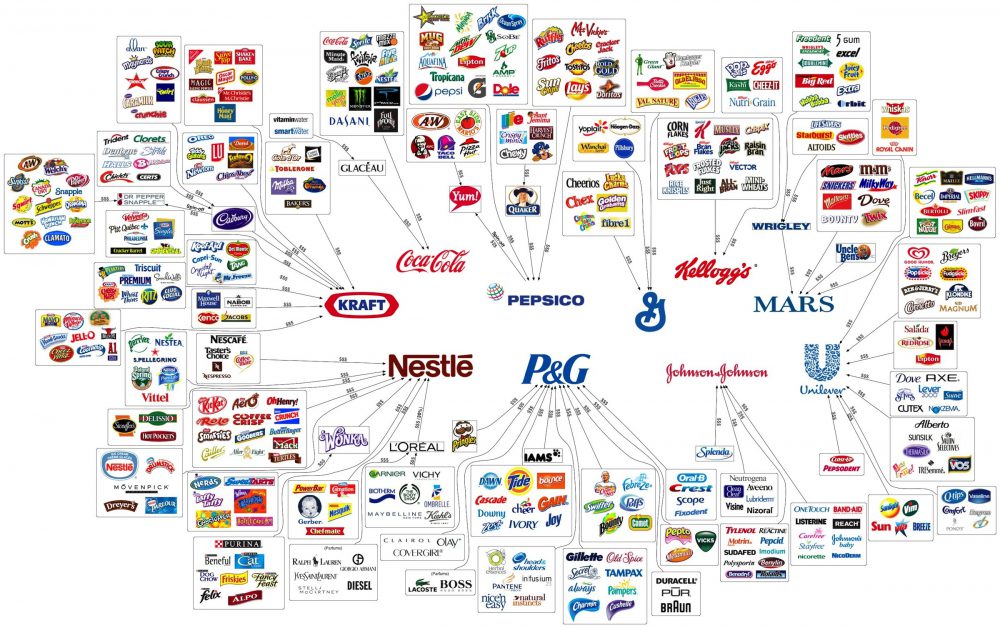Mergers and acquisitions are a driving force in the food industry today. Plus, a growing middle class and the millennial population are less brand loyal than previous generations, leading to a surge in store brands. What does this mean for food manufacturers? How should they respond to this disruption in the industry?
Acknowledge that the next generation is changing the food game
We can’t rely on what we used to know about how consumers make purchasing decisions. “That’s what we’ve always done” is no longer a valid justification in today’s food and beverage market.
We hear a lot about “millennials” and “Gen Z,” but the labels don’t matter as much as the reality: Younger consumers are making purchasing decisions, and they’re a part of a generation with different expectations and experiences.
These younger consumers:
- Are not brand loyal
- Are technology savvy
- Actively use social media
- Care more about food origin and sustainability
Traditional, “established” food companies have been slow to respond to this trend. If you want your business to thrive, it’s crucial that you adapt business practices and establish leaders who understand the realities of the changing business environment.
Changing demographics and tastes have opened the door for small companies to deliver niche products, and they’re using technology to reach a broader audience.
A number of smaller companies (relative to legacy giants) have disrupted key categories like ice cream, snacks and yogurt. Consider brands like Annie’s, Oatly, Beyond Meat, Halo Top and KIND who have overtaken larger competitors for category leadership or have created new categories altogether, especially in the booming plant-based market.

Source: Halo Top Creamery
If you’re acquiring a smaller brand into your portfolio, plan your processing strategically
Mergers and acquisitions come with numerous considerations and logistical consolidations, but at Stellar, we’re always viewing things from an operations and processing perspective as well. We often advise clients who are acquiring a new business to consider how it will affect their processing strategy:
- Will this new branch of your business operate out of its existing plant?
- Will you absorb the new manufacturing process into your current campus?
- Will you partner with an outside co-packer?
It’s important to conduct an analysis to determine which option best supports your company’s long-term goals.
If it makes sense to keep the existing plant operational, it’s worth assessing if efficiency and throughput can be increased. Often times, smaller brands may be successful but don’t have the capital to scale manual operations to automation. An investment like that can make your acquisition of a new, successful operation even better. Conduct a facility assessment to know what you’re working with before diving in head-first.
If you’re relocating the operations to your main campus, make sure that subtle changes don’t have an impact on product texture, flavor and quality. Changes made with good intentions can have negative repercussions. Also, focus on reducing changeover time and cost to accommodate the new product line(s).
Partnering with a co-packer may not be your first choice since that comes with the risk of divulging proprietary processing and thus a potential competitive edge. However, depending on the product, bringing in a co-packer is something many companies consider as they mature, especially for lower-margin products.
Be nimble and responsive to the marketplace
In this ever-changing climate, the most successful companies stay agile and build in the flexibility to adapt. What does that look like?
Build flexibility into new facilities and renovations
In the old days, companies tried to minimize square footage around every facet of their operations in order to have a building just big enough for their processing. Now, there is more openness to bigger spaces that allow for more flexibility — especially around packaging lines — since we can’t know what the future holds.
Thanks to ever-changing consumer demand, minimizing your building footprint is no longer a top priority. Instead you should ensure you have enough space to execute changeovers quickly for certain product lines.
Design-build vs. bidding out to a general contractor
Traditionally, many companies would fully develop a solution with a dedicated design firm, then take that solution and bid it to three or more general contractors (GCs). Once they received those bids back, they would spend time analyzing the differences and choosing a GC. This process requires a lot of time and money, which isn’t conducive in today’s fast-paced market.
By working with a fully integrated design-build firm, you have a better understanding of whether a project will meet your expectations as you go. You receive feedback during the design and development phases that give you indications on budget and size impacts, and construction can begin while design decisions are still being made.
When choosing a design-build partner, it’s critical to go with a partner who understands the market. A firm that has done numerous similar projects before will have an established database of anticipated costs, allowing for more accurate estimates and more informed decisions.




